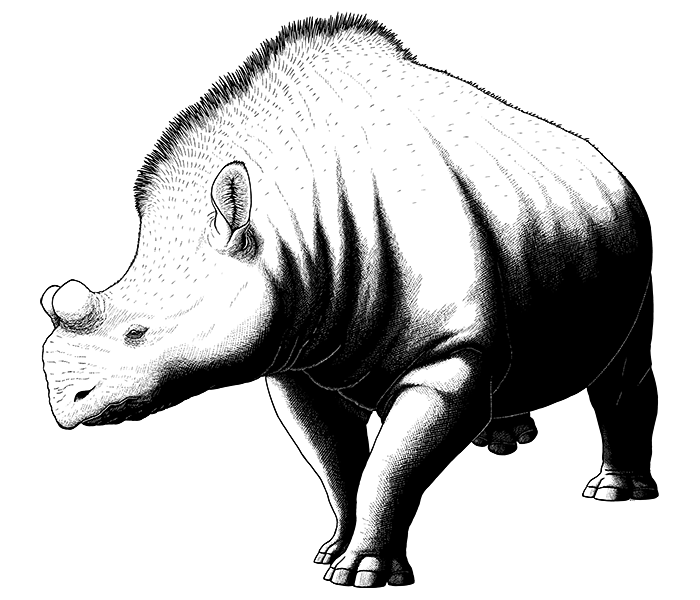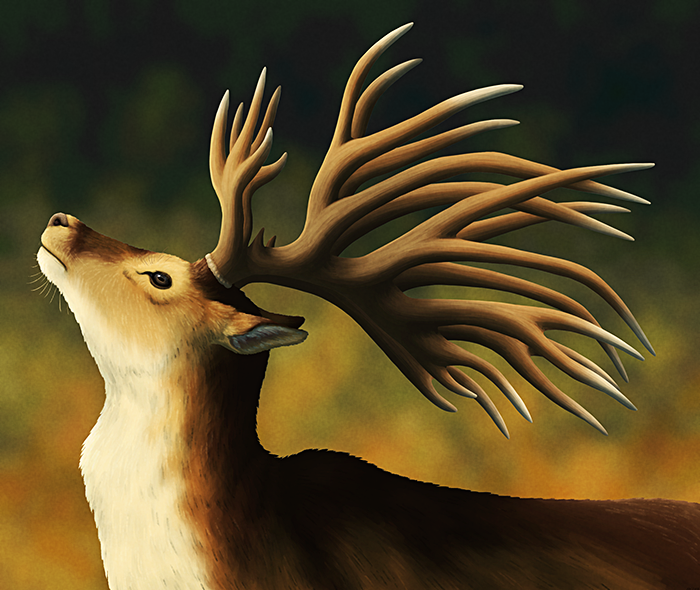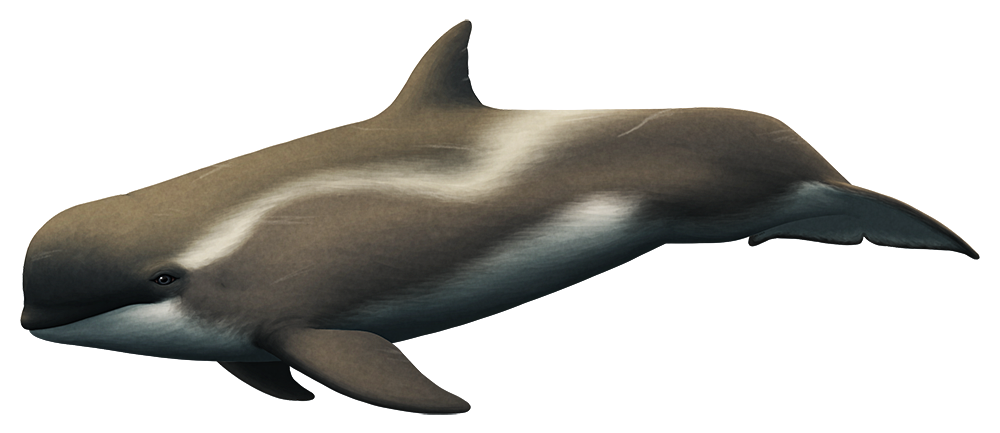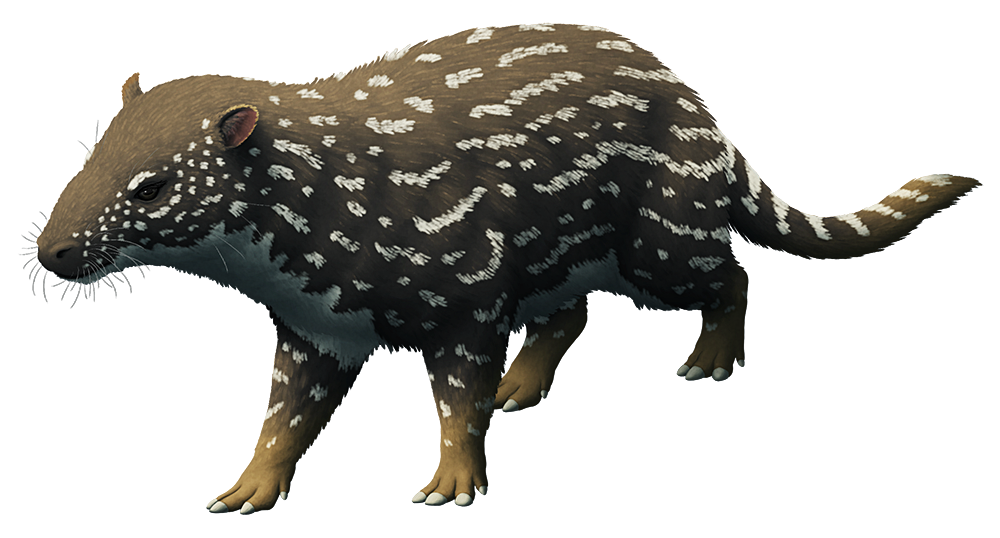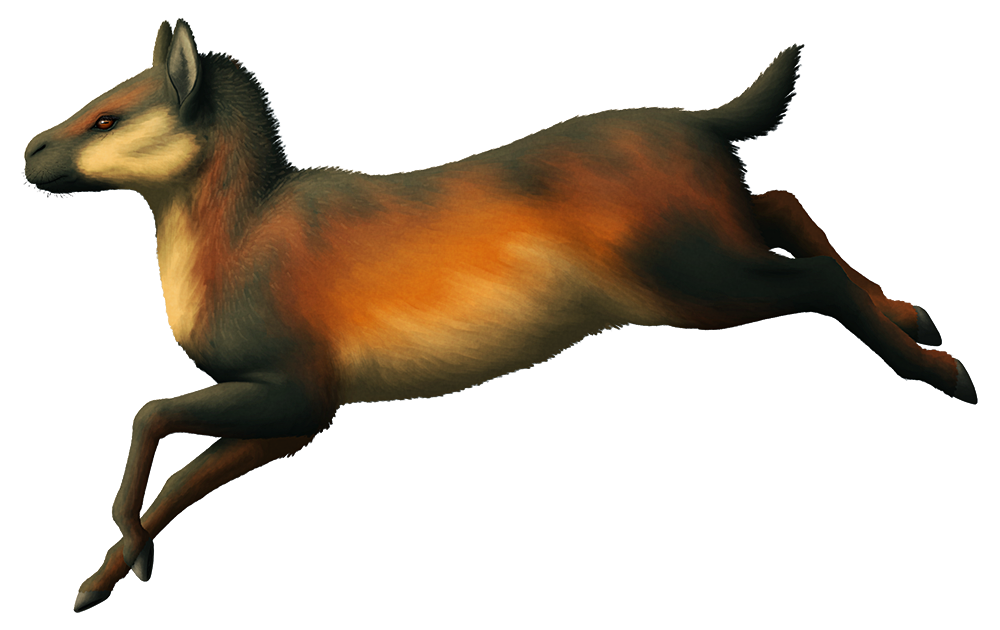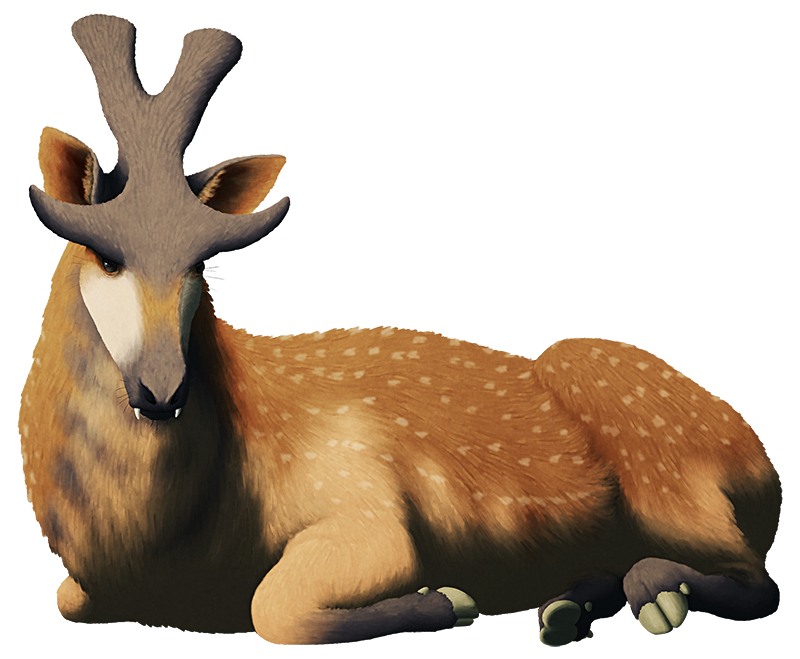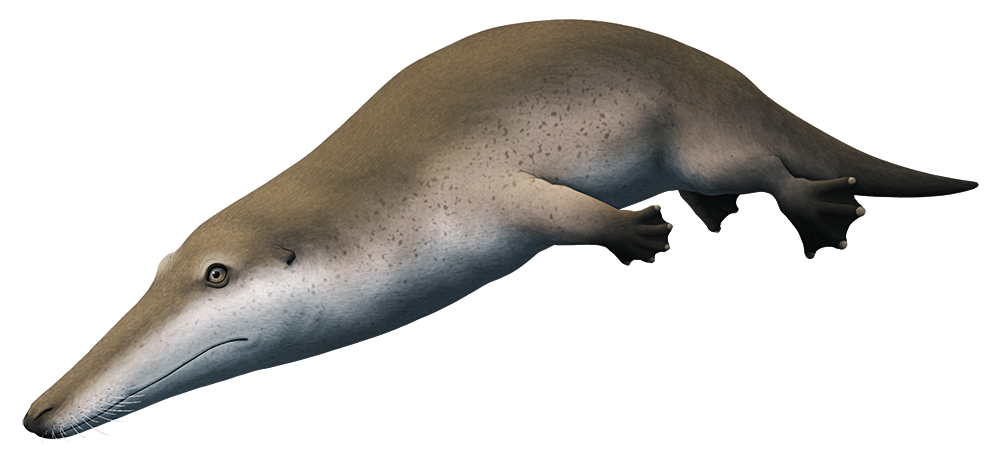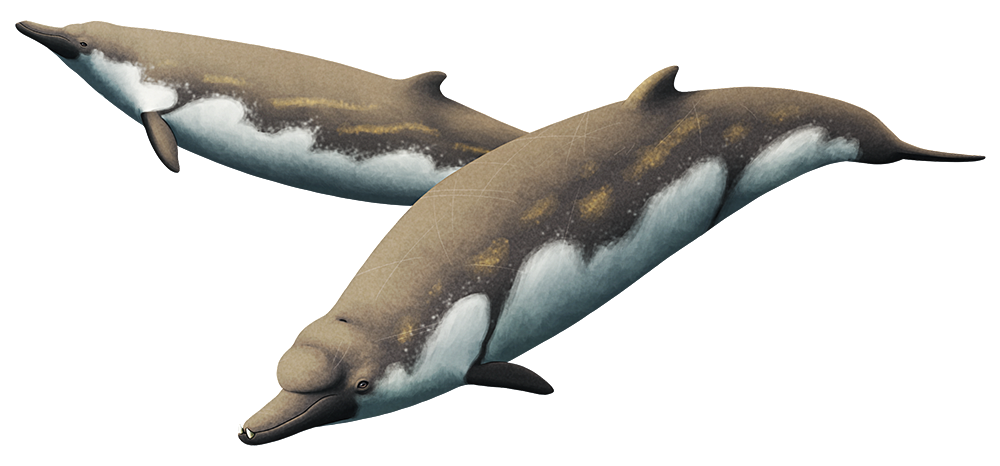Diplacodon gigan, a brontothere from the Early Eocene of Wyoming, USA (~46-42 mya). Standing around 2.1m tall at the shoulder (~7′) it was named after the kaiju Gigan for its relatively large size – not quite as big as some later brontotheres, but still about 20% larger than other known species of Diplacodon.
It had a pair of blunt bony projections on its snout which would have been covered with skin in life, similar to the ossicones of modern giraffids, with males having larger “horns” than females.
Despite looking very similar to rhinos, brontotheres were actually much more closely related to horses, with the resemblance being a result of convergent evolution for the same sort of big-tanky-herbivore ecological niche.

